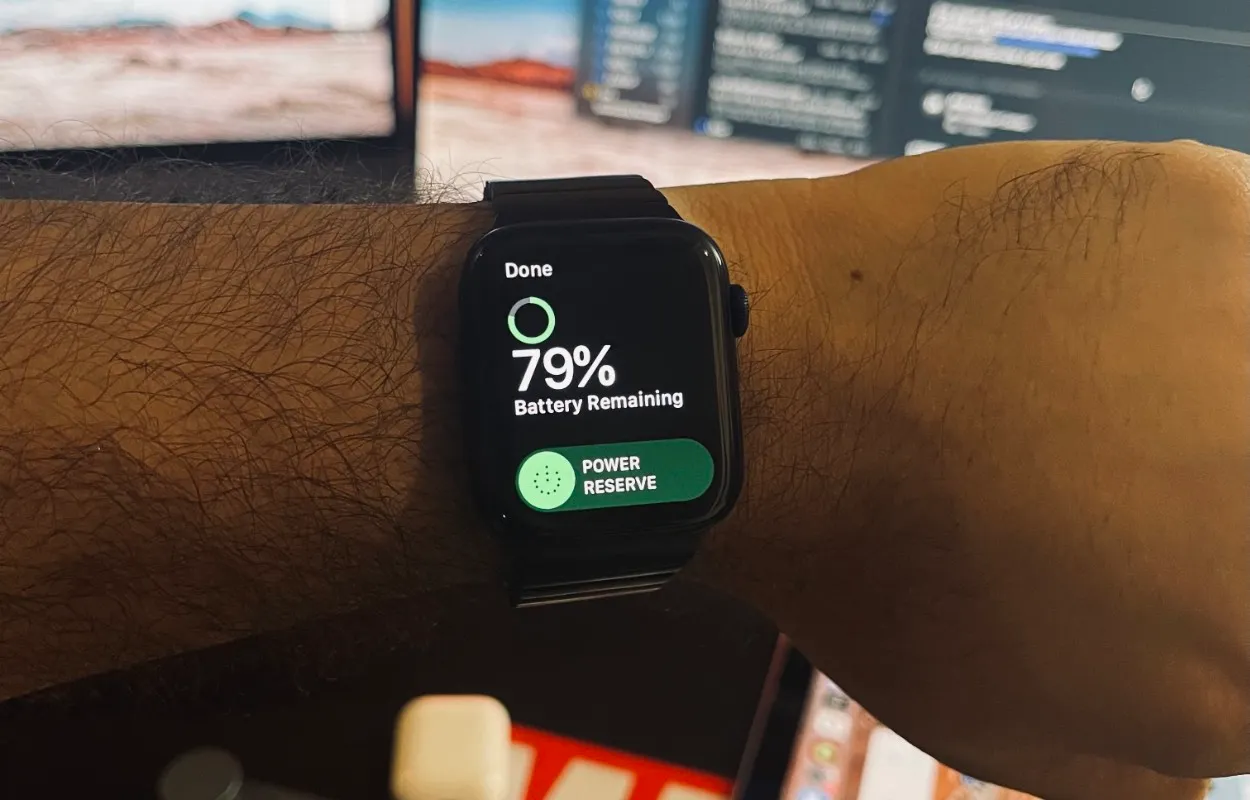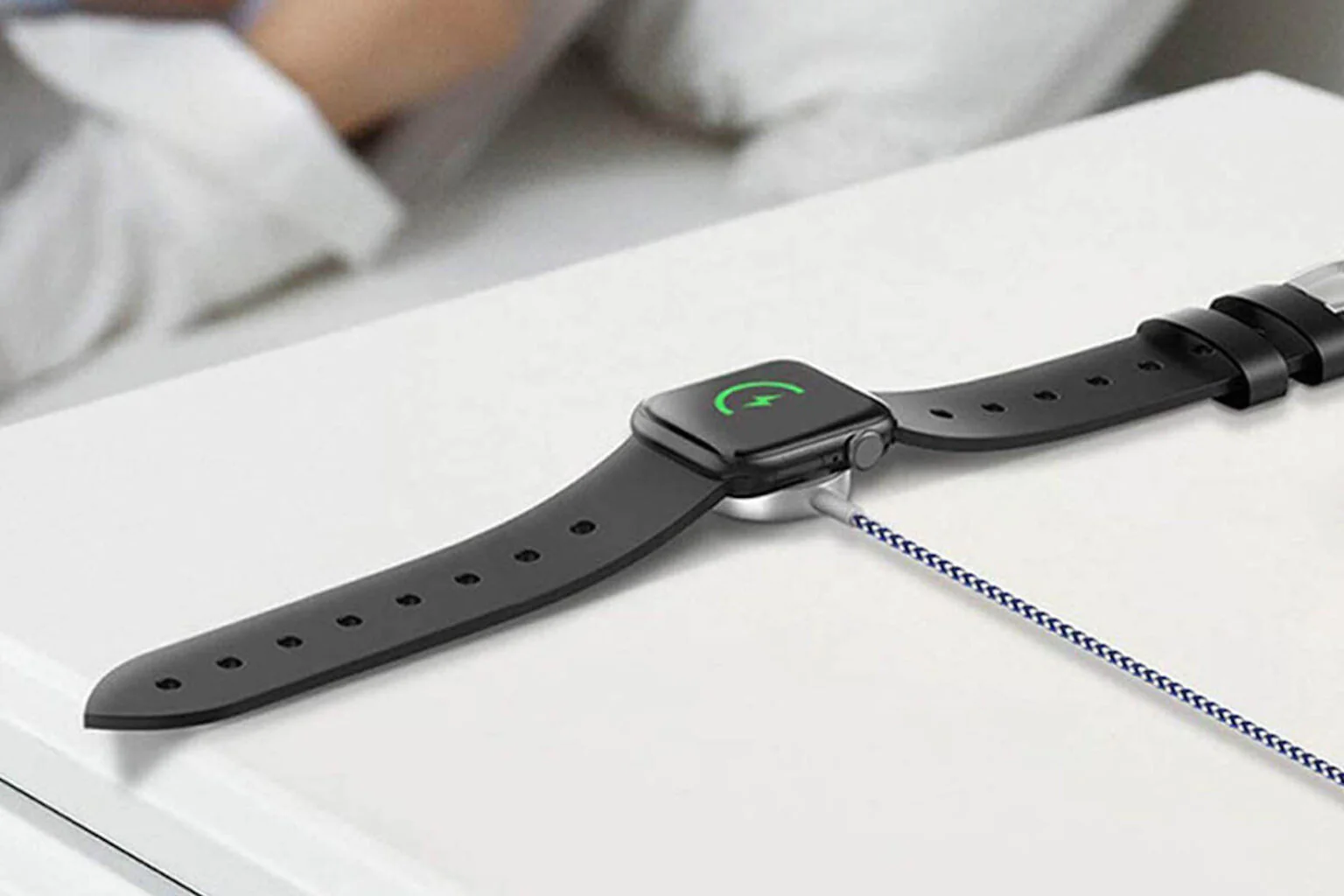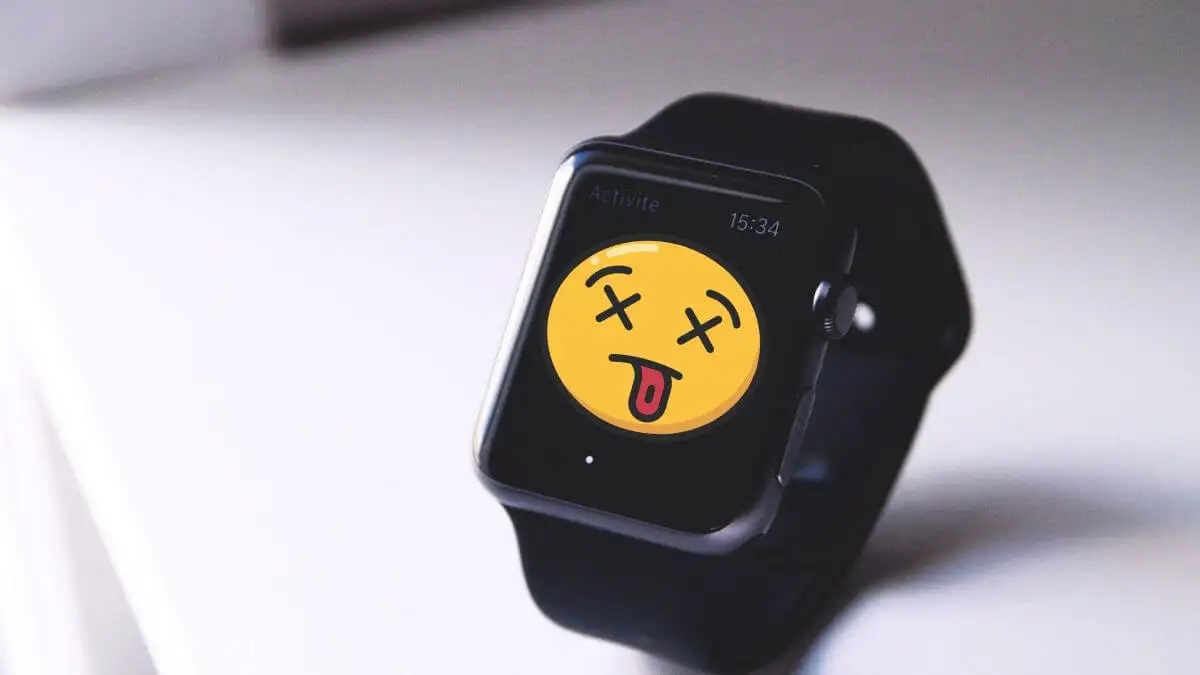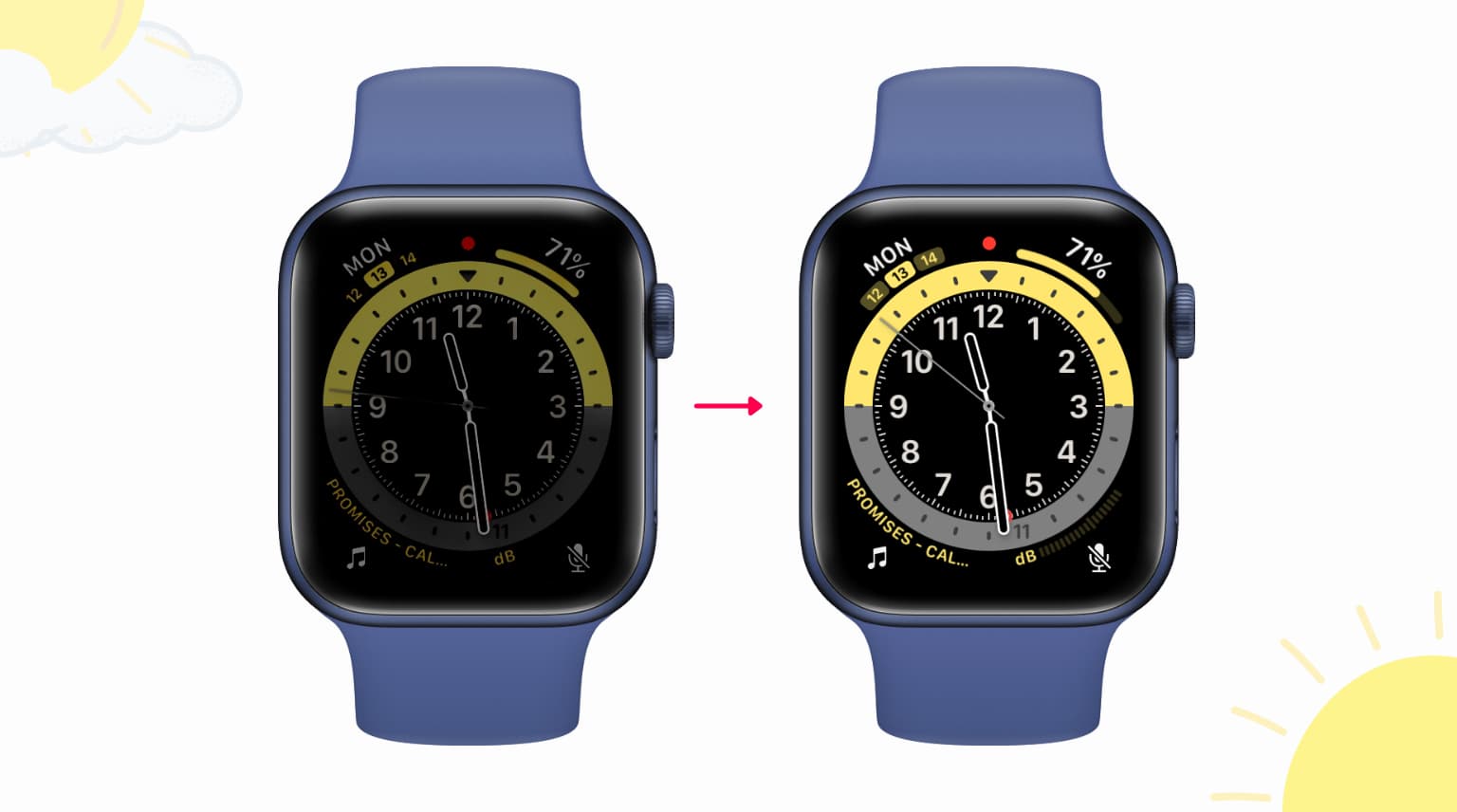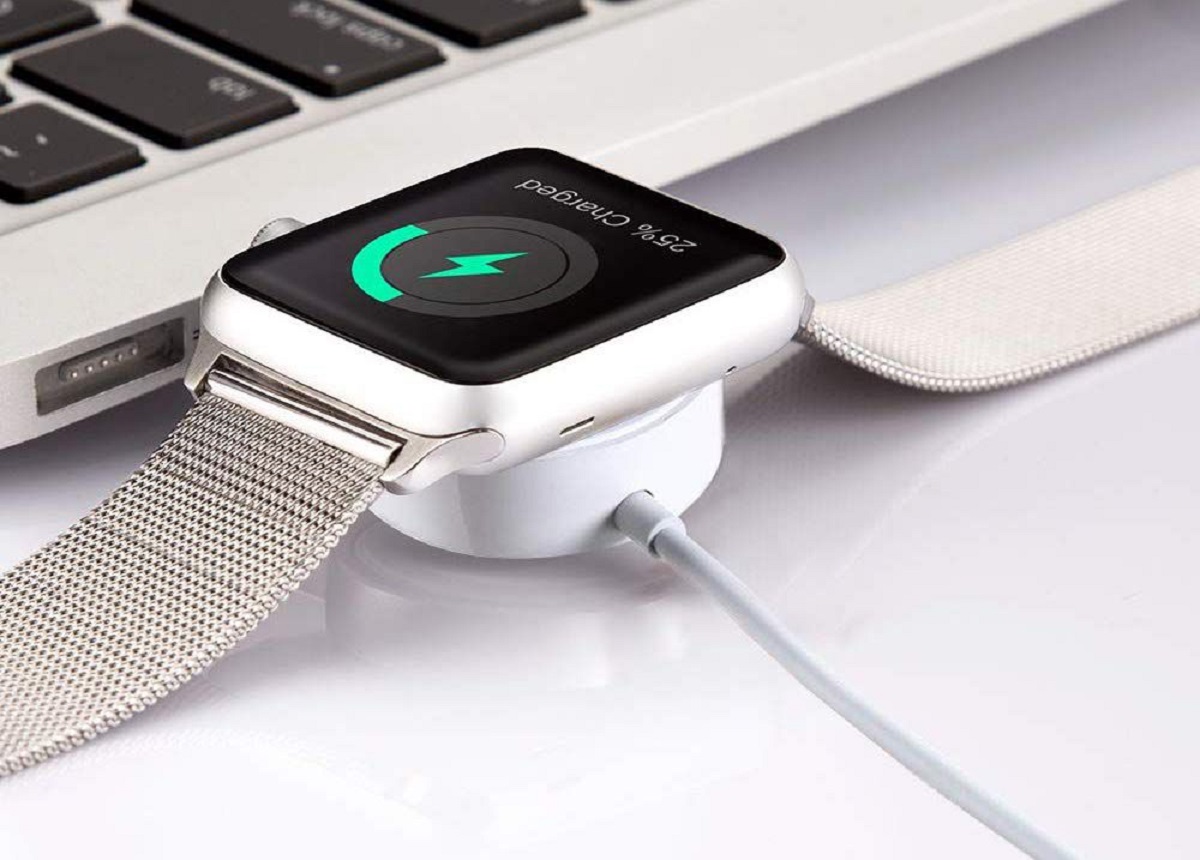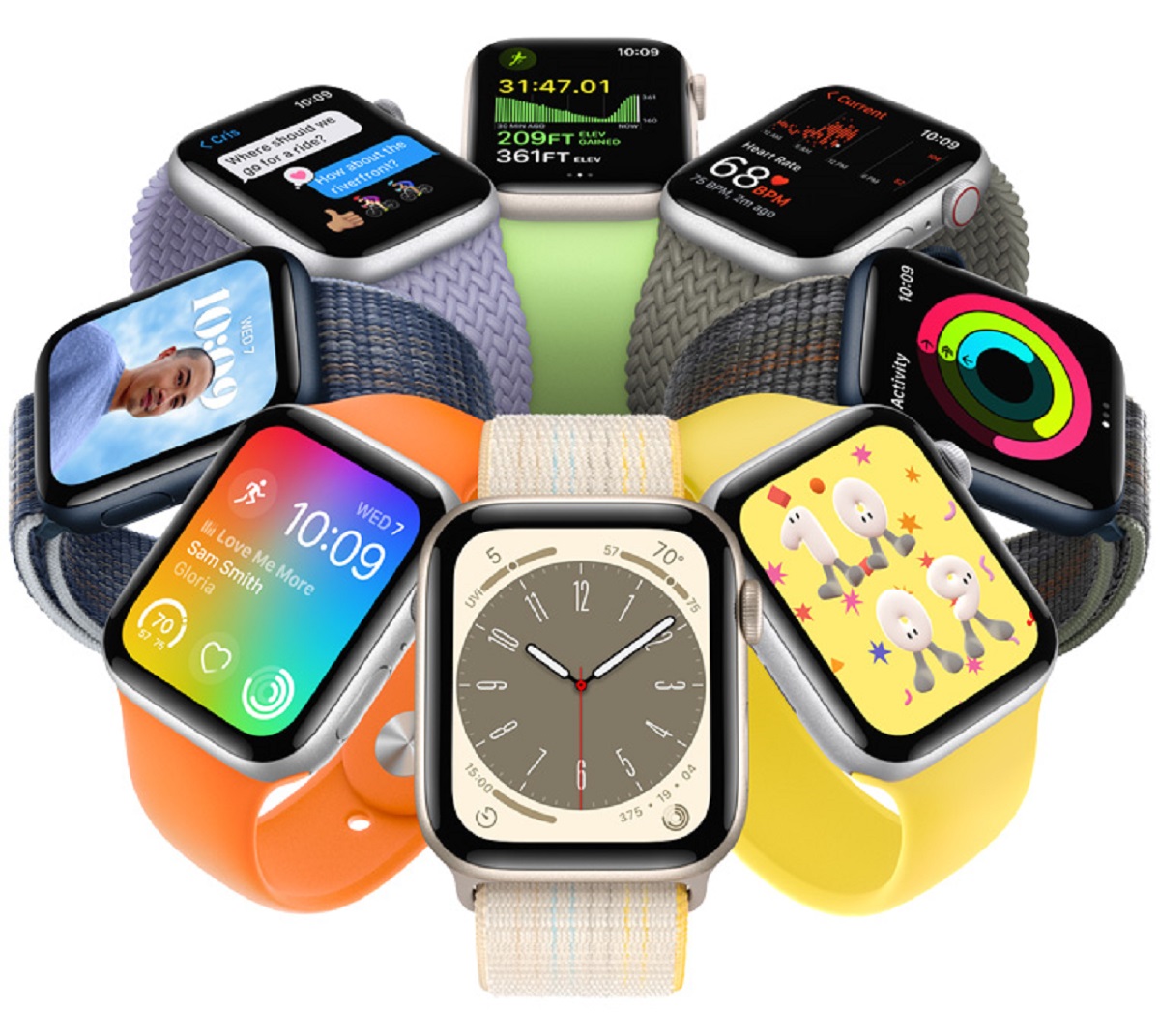Introduction
The Apple Watch is a powerful and feature-rich smartwatch that offers convenience and functionality at your fingertips. However, with all its capabilities, battery life can be a concern for many Apple Watch users. To get the most out of your Apple Watch and ensure it lasts throughout the day, it’s important to optimize its battery usage.
In this article, we will discuss various tips and tricks to help you save battery life on your Apple Watch. These simple adjustments and optimizations can go a long way in extending the battery life of your device, allowing you to use it for longer periods without worrying about recharging.
From adjusting display settings to managing app usage, we’ll explore various methods that can help you conserve battery life on your Apple Watch. By implementing these strategies, you can strike a balance between enjoying the features of your smartwatch and keeping its battery consumption in check.
So, if you’re ready to maximize the battery life of your Apple Watch, let’s dive into the tips and techniques that will help you achieve just that.
Adjusting Display Settings
One of the primary factors that impact the battery life of your Apple Watch is the display. By making a few adjustments to the display settings, you can significantly reduce power consumption and prolong the battery life.
Firstly, consider lowering the screen brightness on your Apple Watch. The brighter the display, the more power it requires. You can easily adjust the brightness level in the settings of your Apple Watch or by swiping up from the watch face and using the control center. Experiment with different brightness levels and find the one that is comfortable for you while conserving battery life.
Another option is to enable the “Always On” display feature only when necessary. With this feature, the watch face will always be visible, but it can drain the battery more quickly. Consider disabling it when you don’t need constant access to the time and other information. Keep in mind that this feature may not be available on all Apple Watch models.
Furthermore, you can adjust the duration of the display’s active state. By default, the display turns off quickly after you stop interacting with it, which helps conserve battery life. However, if you find it inconvenient, you can increase the duration in the settings of your Apple Watch. Just be aware that this change might impact the battery life.
Additionally, consider enabling the “Wake Screen on Wrist Raise” feature only when needed. This feature wakes up the display when you raise your wrist, but it can consume more battery power. Evaluate whether the convenience outweighs the battery impact and disable it if necessary.
By fine-tuning the display settings on your Apple Watch, you can optimize its battery usage. Experiment with different options and find the combination that offers the right balance between functionality and battery conservation.
Minimizing Notifications
Notifications are a convenient feature that keeps you informed about important events, messages, and updates. However, receiving excessive notifications on your Apple Watch can quickly drain its battery. Here are some tips to minimize unnecessary notifications and save battery life.
Firstly, review the notification settings on your paired iPhone. By default, many apps send notifications to both your iPhone and Apple Watch. You can customize which apps send notifications to your watch by going to the Apple Watch app on your iPhone and navigating to the “Notifications” section. Disable notifications for apps that are not essential or that you don’t need constant updates from. This way, your Apple Watch will only receive notifications from apps that are important to you.
Additionally, consider setting up notification grouping on your Apple Watch. With notification grouping, multiple notifications from the same app or conversation are grouped together, reducing clutter and the number of individual notifications. You can enable this feature in the “Notifications” settings on your Apple Watch or in the Apple Watch app on your iPhone.
Take advantage of the “Do Not Disturb” feature on your Apple Watch to temporarily silence notifications when you don’t want to be bothered. This can be useful during meetings, workouts, or when you simply need uninterrupted time. Simply swipe up from the watch face and tap the crescent moon icon to enable “Do Not Disturb” mode.
Furthermore, consider disabling unnecessary haptic feedback for notifications. While haptic feedback provides a tactile response for notifications, it consumes battery power. You can manage haptic feedback settings in the Apple Watch app on your iPhone. Disable haptic feedback for apps that don’t require immediate attention.
By minimizing notifications on your Apple Watch, you can reduce its battery consumption and ensure that you only receive important alerts. Tailor your notification settings to your needs and preferences to optimize your Apple Watch’s battery life.
Managing App Usage
The Apple Watch offers a wide range of apps that can enhance your daily activities. However, running multiple apps simultaneously or keeping unnecessary apps active in the background can significantly impact the battery life of your device. Here are some tips to effectively manage app usage and conserve battery life on your Apple Watch.
Firstly, declutter your Apple Watch by removing any unused or unnecessary apps. Having fewer apps on your device not only frees up storage space but also reduces the overall system load, leading to improved battery efficiency. To remove apps, press and hold the app icon on the home screen until the icons start to shake, then tap the “X” button in the corner of the app you want to delete.
Additionally, take advantage of the app switcher feature to ensure that only essential apps are running in the background. To access the app switcher, press the side button on your Apple Watch. Swipe left or right to navigate through the open apps and close any apps that you don’t need actively running. This prevents unnecessary background activity and conserves battery power.
Furthermore, consider disabling automatic app updates on your Apple Watch. With automatic updates enabled, your watch will periodically check for and download app updates, contributing to increased battery consumption. To manage app updates, open the Watch app on your paired iPhone and go to the “My Watch” tab. From there, scroll down and toggle off the “Automatic App Install” setting.
Another useful tip is to disable unnecessary app notifications. Some apps constantly send updates or alerts to your Apple Watch, potentially draining the battery. Take a few moments to review the notification settings for each app and disable notifications for non-essential or less frequently used apps.
By managing your app usage effectively, you can optimize your Apple Watch’s battery life and ensure that it remains functional throughout the day. Regularly reassess the apps you have installed, close unnecessary background processes, and disable excessive notifications to conserve battery power.
Using Low Power Mode
When you find yourself in a situation where you need your Apple Watch to last longer without access to a charger, activating the Low Power Mode can be a game-changer. This mode adjusts various settings to minimize battery usage and extend the battery life of your Apple Watch. Here’s how you can make the most of Low Power Mode:
To enable Low Power Mode, swipe up from the watch face to access the control center on your Apple Watch. Tap on the battery percentage and then turn on the “Low Power Mode” toggle. Once activated, your Apple Watch will automatically disable certain features and functionalities to conserve power.
In Low Power Mode, your Apple Watch will dim the screen and reduce the refresh rate to prolong battery life. Additionally, it will disable the “Hey Siri” feature, preventing accidental activations that can drain the battery. While in Low Power Mode, the heart rate sensor may not be as frequent in capturing data, but essential health-related features will still be available.
It’s important to note that some features and functions may be reduced or disabled when Low Power Mode is active. For example, background refresh, automatic app updates, and some visual animations may be limited or turned off. However, basic functionalities like receiving and responding to notifications, making and receiving calls, and tracking workouts will still be available.
Remember to monitor your battery level and disable Low Power Mode once your Apple Watch is charged or when you no longer need to conserve power. To turn off Low Power Mode, simply swipe up from the watch face, tap on the battery percentage, and toggle off the “Low Power Mode” setting.
By utilizing Low Power Mode when necessary, you can extend the battery life of your Apple Watch and have peace of mind knowing it will last longer during times when charging is not immediately possible. Consider enabling Low Power Mode during extended outings, travel, or situations where access to a charger may be limited.
Disabling Background App Refresh
Background App Refresh is a feature on your Apple Watch that allows apps to update their content in the background, ensuring you have the latest information when you open them. While this feature is convenient, it can also consume a significant amount of battery power. Disabling Background App Refresh can help conserve battery life. Here’s how you can do it:
To disable Background App Refresh on your Apple Watch, open the Watch app on your paired iPhone. Scroll down to find the “General” tab and tap on it. Then, select “Background App Refresh”. Here, you will see a list of apps that are allowed to refresh their content in the background. Toggle off the switch for each app that you want to disable Background App Refresh for.
By disabling Background App Refresh, you are preventing apps from updating their content in the background when you’re not actively using them. This can help reduce battery consumption and optimize the performance of your Apple Watch.
While disabling Background App Refresh may prevent some apps from providing real-time updates, rest assured that you can still manually refresh the app content by opening the respective app when needed. This way, you have more control over which apps are actively refreshing in the background and consuming battery power.
It’s worth noting that some apps may have their own individual settings for Background App Refresh, which can be accessed in the “Background App Refresh” section of the Watch app on your iPhone. Take the time to review and adjust these settings based on your preferences and the importance of real-time updates for each app.
By disabling Background App Refresh for unnecessary or less important apps on your Apple Watch, you can conserve battery power and ensure that only essential apps are updating their content in the background. This simple adjustment can have a significant impact on extending the battery life of your device.
Turning Off Noise Notifications
Noise notifications are a useful feature on your Apple Watch that alerts you when ambient sound levels around you reach a level that could potentially damage your hearing. While this feature promotes your well-being, it can also lead to unnecessary battery drain. By turning off noise notifications, you can conserve battery life on your Apple Watch. Here’s how you can do it:
To disable noise notifications, open the “Settings” app on your Apple Watch. Scroll down and tap on “Noise”. Here, you will find the option to toggle off “Environmental Sound Measurements” and “Exposure Notifications”. By turning off these settings, your Apple Watch will no longer monitor the environment for potentially harmful noise levels and won’t provide notifications related to noise exposure.
Disabling noise notifications can be particularly useful in situations where you don’t need this feature actively enabled. For example, if you are in a controlled and quiet environment or if you prefer not to receive noise-related alerts.
It’s important to note that by turning off noise notifications, you won’t receive alerts for potentially harmful noise levels. However, other important notifications and functions of your Apple Watch will continue to work as usual.
If you find that you do need noise notifications at times but don’t want them constantly enabled, consider manually enabling and disabling the feature as needed. You can easily toggle noise notifications on or off through the Control Center on your Apple Watch.
By turning off noise notifications on your Apple Watch, you can help extend its battery life. Evaluate your needs and preferences regarding noise monitoring and adjust the settings accordingly. This way, you can strike a balance between battery conservation and ensuring your overall well-being.
Optimizing Workout Tracking
The Apple Watch is a great companion for tracking your workouts and monitoring your fitness progress. However, continuously tracking your workouts can consume a significant amount of battery power. To optimize battery life while still making the most of your Apple Watch’s workout tracking capabilities, consider the following tips:
Firstly, be selective with which workouts you track. The Apple Watch offers a wide range of workout options to choose from. While it’s tempting to track every workout, keep in mind that GPS-based activities like running or cycling with built-in heart rate monitoring will consume more battery power compared to less intensive activities like strength training or yoga. Prioritize tracking workouts that are most important to you and consider manually starting and stopping the workout tracking feature when needed.
Another tip is to use the Power Saving Mode during your workouts. When using workout tracking apps like Apple’s built-in Workout app, enable Power Saving Mode to disable the heart rate sensor and cellular data during the workout. This can significantly conserve battery power while still providing basic activity tracking functionality.
Additionally, consider using external heart rate monitors or sensors. Some third-party apps allow you to connect compatible Bluetooth heart rate monitors or sensors with your Apple Watch. By using these external devices, you can rely less on the built-in heart rate monitoring of the watch, which can help extend battery life.
Adjusting the frequency of heart rate readings can also help optimize battery life during workouts. By default, the Apple Watch takes frequent heart rate readings throughout your workout. However, you can change this setting to take readings less frequently during longer workouts. You can adjust the setting in the Apple Watch app on your iPhone under the “Workout” section.
Lastly, remember to end your workouts when you’re finished. Although it may seem obvious, leaving a workout session running in the background can continue to consume battery power. Always make sure to manually end your workouts once you’re done.
By implementing these optimization techniques, you can strike a balance between utilizing the workout tracking features of your Apple Watch and preserving its battery life. Customize your workout settings and choose the activities you track wisely to ensure a longer-lasting and efficient experience.
Adjusting Haptic Feedback
Haptic feedback on the Apple Watch provides tactile sensations for various notifications, alerts, and interactions. While haptic feedback enhances the user experience, it can also contribute to battery drain. By adjusting the haptic feedback settings on your watch, you can optimize battery life without compromising functionality. Here are some tips to help you adjust haptic feedback:
To adjust the haptic feedback settings on your Apple Watch, go to the “Settings” app and tap on “Sounds & Haptics”. Here, you can customize the haptic feedback intensity and duration to suit your preferences and conserve battery power. Experiment with different settings to find the balance that works best for you.
Consider lowering the intensity of haptic feedback to reduce battery consumption. The default setting may be more intense than necessary for many users. Lowering the intensity can still provide a noticeable tactile response while using less energy.
You can also adjust the duration of the haptic feedback to conserve battery life. Shortening the duration of the haptic feedback can reduce the amount of power used for each vibration. Strike a balance where the duration is sufficient for you to notice the feedback without being unnecessarily long.
Another option is to disable haptic feedback for specific types of notifications. Assess the importance of each type of notification and disable haptic feedback for those that are less critical or require less immediate attention. For example, you may choose to disable haptic feedback for social media notifications or non-essential app alerts.
Additionally, consider disabling haptic feedback for certain interactions or gestures that you perform frequently. For instance, if you regularly use the “Raise to Wake” feature, where the watch face lights up when you raise your wrist, disabling haptic feedback for this gesture can help conserve battery power.
By adjusting the haptic feedback settings on your Apple Watch, you can fine-tune the tactile response to your preference while optimizing battery life. Customize the intensity and duration of the haptic feedback and disable it for non-essential notifications or actions to ensure an efficient and personalized experience with your device.
Managing Bluetooth Connectivity
Bluetooth connectivity plays a crucial role in the functionality of your Apple Watch, allowing it to connect to your iPhone and other accessories. However, maintaining a constant Bluetooth connection can contribute to battery drain. By managing Bluetooth connectivity effectively, you can optimize battery life on your Apple Watch. Here are some tips to help you do so:
One way to conserve battery is by ensuring that your Apple Watch is always paired with a reliable and stable Bluetooth connection. If your iPhone is within range, your watch will automatically connect to it. However, if you’re not actively using your watch, you may consider turning off Bluetooth on your iPhone to prevent constant connection attempts and conserve battery power. Keep in mind that this can limit certain features and functionalities that rely on the iPhone’s connection.
Another option is to disable Bluetooth on your Apple Watch temporarily when you’re not using any Bluetooth accessories or when you’re in a situation where a connection isn’t necessary, such as during flights or remote outdoor activities. You can disable Bluetooth by swiping up from the watch face and tapping the Bluetooth icon in the control center. Remember to enable it again when you need to reconnect with accessories or your iPhone.
Furthermore, managing the number of Bluetooth accessories connected to your Apple Watch can also impact battery life. Every connected device introduces additional power consumption. Consider pairing only the accessories that you frequently use and disconnecting or unpairing any devices that are not currently needed.
If you’re experiencing connectivity issues or your Apple Watch is struggling to maintain a stable Bluetooth connection, restarting both your Apple Watch and iPhone can sometimes resolve the problem. This simple step can help ensure a more efficient and reliable Bluetooth connection, which ultimately contributes to improved battery life.
Lastly, keeping your Apple Watch and iPhone software up to date is important. System updates often include bug fixes and improvements that address connectivity issues and enhance battery optimization. Regularly check for software updates on both devices and install them as they become available.
By managing Bluetooth connectivity effectively, you can significantly improve the battery life of your Apple Watch. Whether it’s toggling Bluetooth on and off, pairing only essential accessories, or keeping your devices up to date, these strategies can help you strike a balance between connectivity and power conservation.
Restarting and Resetting Your Apple Watch
Restarting and resetting your Apple Watch can help resolve various software issues and improve its overall performance. Additionally, performing these actions can contribute to optimizing the battery life of your device. Here’s how you can restart and reset your Apple Watch:
To restart your Apple Watch, press and hold the side button until the power off screen appears. Slide the power off slider to the right, and once the watch is completely off, press and hold the side button again until the Apple logo appears. A restart can help clear temporary glitches and refresh the device, which can potentially improve its efficiency and prolong battery life.
If you’re facing persistent issues or wish to start with a fresh setup, you may consider resetting your Apple Watch. To do this, go to the “Settings” app on your watch, tap on “General”, select “Reset”, and choose “Erase All Content and Settings”. Keep in mind that this action will erase all data and settings on your watch, so make sure to back up any important information beforehand.
After resetting your Apple Watch, you have the option to set it up as new or restore it from a backup. Consider setting it up as new if you want a clean and optimized start. However, if you want to retain your previous settings and data, restoring from a backup may be a preferable option.
Performing regular restarts or occasional resets can help maintain the smooth operation of your Apple Watch and optimize its battery life. By clearing out any software bugs or conflicts, you ensure that the device is functioning at its best and minimizing any unnecessary drains on the battery.
In addition to restarting and resetting your watch, it’s also important to keep the watch software up to date. Software updates often contain bug fixes and improvements that can enhance battery optimization and performance. Check for available updates in the Watch app on your connected iPhone and install them as they become available.
By restarting and resetting your Apple Watch when necessary and keeping it updated, you can effectively resolve software issues and maximize battery life. However, exercise caution when performing a reset, as it erases all data. Choose the option that best suits your needs and ensures optimal performance for your Apple Watch.
Conclusion
In conclusion, optimizing battery life on your Apple Watch is crucial for ensuring that it lasts throughout your busy day. By implementing the tips and techniques discussed in this article, you can make the most of your device’s capabilities while conserving battery power.
Adjusting display settings, minimizing notifications, managing app usage, and using Low Power Mode are effective ways to reduce battery consumption. Disabling Background App Refresh and noise notifications can further extend battery life. Optimizing workout tracking, adjusting haptic feedback, managing Bluetooth connectivity, and restarting or resetting your Apple Watch are additional strategies to consider in your battery-saving efforts.
Remember to strike a balance between functionality and battery conservation. Customize your settings based on your needs and preferences. Experiment with different options and observe how they impact your battery life. Regularly update your Apple Watch and connected iPhone to benefit from the latest bug fixes and optimizations.
By following these guidelines, you can maximize the battery life of your Apple Watch and enjoy its features and benefits throughout the day. Whether you’re tracking workouts, receiving notifications, or using apps, you’ll have peace of mind knowing that your Apple Watch is optimized for efficiency.







